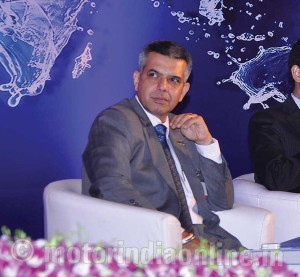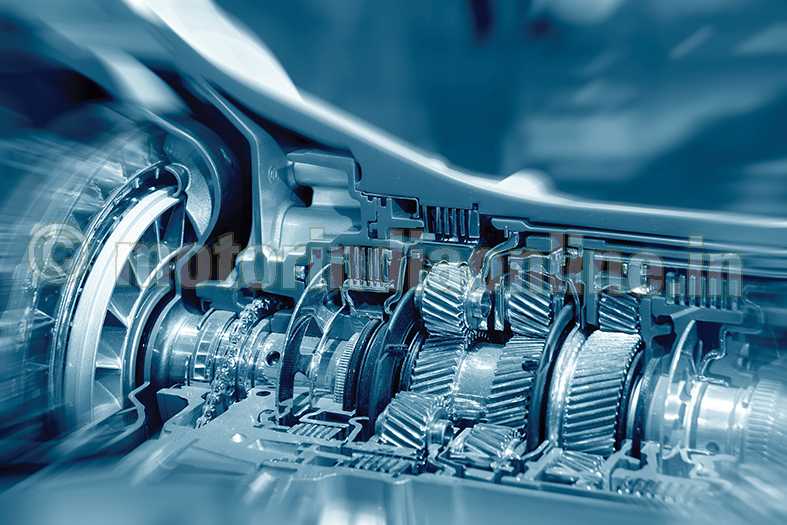Mr. Vinnie Mehta, Director General of the Automotive Component Manufactures Association (ACMA), believes that the worst is behind the industry. He is extremely optimistic about its long-term outlook and expects the sector to reach $115 billion by 2020. In an exclusive to MOTORINDIA, he maintained that the industry will post a four-five per cent growth in the current financial year.
Excerpts:
As a stable government has come at the Centre, and with the evidently major thrust on infrastructure and other sectors, what are the key takeaways for the auto component industry?
The new government has been able to instil a degree of confidence in the industry and has brought in a lot of positivity. It also augurs well for the industry that the Prime Minister has recently announced his ‘Make-in-India’ vision. He is also travelling internationally, carrying this message forward. That is really very good from an (auto component) industry’s perspective because it is helping build India’s image as a global manufacturing hub. We are very happy that there is a dedicated focus in the ‘Made in India’ campaign on the automotive and the component industry. We are hopeful that soon the Government will adopt new policy measures to make this vision a reality.
ACMA has maintained that it has made a conservative estimate and is expecting a four-five per cent growth in revenues during FY 2014-15. Does that mean the market has revived?
Industry associations by nature are very conservative. We will be very happy if we are proven wrong. But I guess it’s a little too early to rejoice. This is because even though some green shoots are emerging, the commercial vehicle industry is still to come out of the recessionary phase although there are some early signs of revival. We hope things would improve for the industry as the year progresses. We expect the component industry to post flattish to positive growth in early digits this fiscal over the last one when our turnover was Rs. 211,000 crores. Having said that, we firmly believe the long-term growth story for India, which is driven by the aspirations of its youth, remains intact, and we are confident that the industry turnover will grow to $115 billion by 2020 from the current $35 billion.
As the domestic passenger vehicle industry is seeing some sort of accelerated growth, do you foresee a similar trend in the CV industry from ACMA’s perspective?
Both the verticals – PVs and CVs – have very different dynamics. The PV industry is considered the bellwether of the economy, while the CV industry is plagued by numerous issues like slowdown in construction, road projects and (the ban on) mining, etc. Therefore, the performance of the CV sector remains somewhat subdued. With a new government in place, we are hopeful that an economic revival will uplift the spirts of the CV sector as well. From a components prospective, the CV sector accounts for 20 per cent of our overall revenues while the PV industry’s contribution is 40 per cent, two-wheelers around 20 per cent and the remaining ones are off-highway vehicles, tractors, construction equipment, etc. We are happy to see some traction from the PV and the 2-wheeler segment, and we do hope that the CV sector will revive soon.
A number of Tier-1 giants are now exporting their products to global multinational giants. Moreover, several CV players like Daimler, MAN, Scania, etc., are sourcing components from India. So do you reckon that the Indian auto component is gaining a lot of prominence worldwide?

I think there are two aspects to it. The first one is that we are able to supply to global OEMs. Moreover, if you see the export numbers, we shipped out auto parts worth $10 billion last year. Out of the total amount, nearly 80 per cent was sent to global OEMs and Tier-1 component players. What is boosting our exports is that there are over 35 International Purchase Offices (IPOs) in the country. This is testimony to the fact that globally people are accepting Indian auto components which are considered to be on par with those of other global suppliers. The prospects (for ‘Made in India’ components) India will only grow and become better. Further, ACMA is also challenging and has set a few goals for itself.
For example, there is only one company which is figured among the world’s top 100 suppliers. In the next four-five years, we would like to see at least five Indian suppliers on the list. We would also like our overall exports to touch $30-40 billion by 2020 from the current $10 billion. Furthermore, the revenue that accrues from overseas operations of home-grown players is only $4-5 billion. By 2020, we expect the figure to grow sixfold to $30 billion. So we are very focussed and want to be aggressively getting integrated into the global automotive value chain.
Most of the auto component players were much delighted over the outcome of the Auto Expo Components Show’14. So has this event set a precedent for separate shows for vehicle manufacturers at Greater Noida and its allied partners at Pragati Maidan. And do you expect Automechanika to be held on a bigger scale?
As suppliers to vehicle manufacturers, we would definitely like to have a combined show with our customers. Unfortunately, we do not have space (in India) to accommodate both of us under one roof. We have been exploring this for the last several years, but unfortunately could not find a solution. If there is a solution to it, we will be very happy together. But until then, we will be hosting separate shows. Both the displays – components and vehicles – have become bigger in scale and we need to do justice to the participants (for the space that they need). On Automechanika New Delhi, many people were sceptical initially. However, the success of the show took us all by surprise. This time, the show will be significantly larger than the last.
Of late, the Indian component industry is plagued by the rampancy of cheaper parts from China, etc. So is it turning out to be a bane for the industry?
The answer is yes, because if you look at India’s import bill on auto components, we shipped in parts worth $12.8 billion, out of which nearly 20 per cent came from China. This was followed by imports from Germany, South Korea, Japan and Thailand. It is logical that there will be imports from Germany, Korea, Japan and Thailand (Japanese components base) due to the presence of OEMs from these countries. However, what is of concern is that we do not have a single OEM from China and yet our import bill is the maximum from China. One must understand that imports from China are largely deployed to the aftermarket as we do not have any mandatory standards for safety for auto components in the country (for the aftermarket). We have taken this up with the Government and they are very appreciative of the fact that there need to be standards for products sold in the aftermarket so that such products can be regulated.
ACMA has organised an event on e-mobility this year. Is the industry well geared to develop products for green vehicles?
As you know, ACMA is the facilitator, and we are very happy that the government has rolled this ambitious programme christened the National Electric Mobility Programme (NEMP). Moreover, the government has set up a National Automotive Board (NAB) which will drive the NEMP. ACMA is an integral part of all this process. We are very pleased to be a part of these forward-looking policy measures which will redefine the shape of the domestic automotive industry.
Having said that, there are numerous challenges in actualising the concept of ‘e-mobility’. These challenges are prevalent everywhere, be it Europe, Japan or Germany. The proportion of cars that are electric is very small in the overall vehicle parc. But yes, there has been rapid progress when it comes to embracing hybrid vehicles. The component industry caters to what we call ‘Derived Demand’; so when the OEMs in the country unveil their plans and road map of manufacturing e-mobility solutions, the supply base will expand progressively in response.
